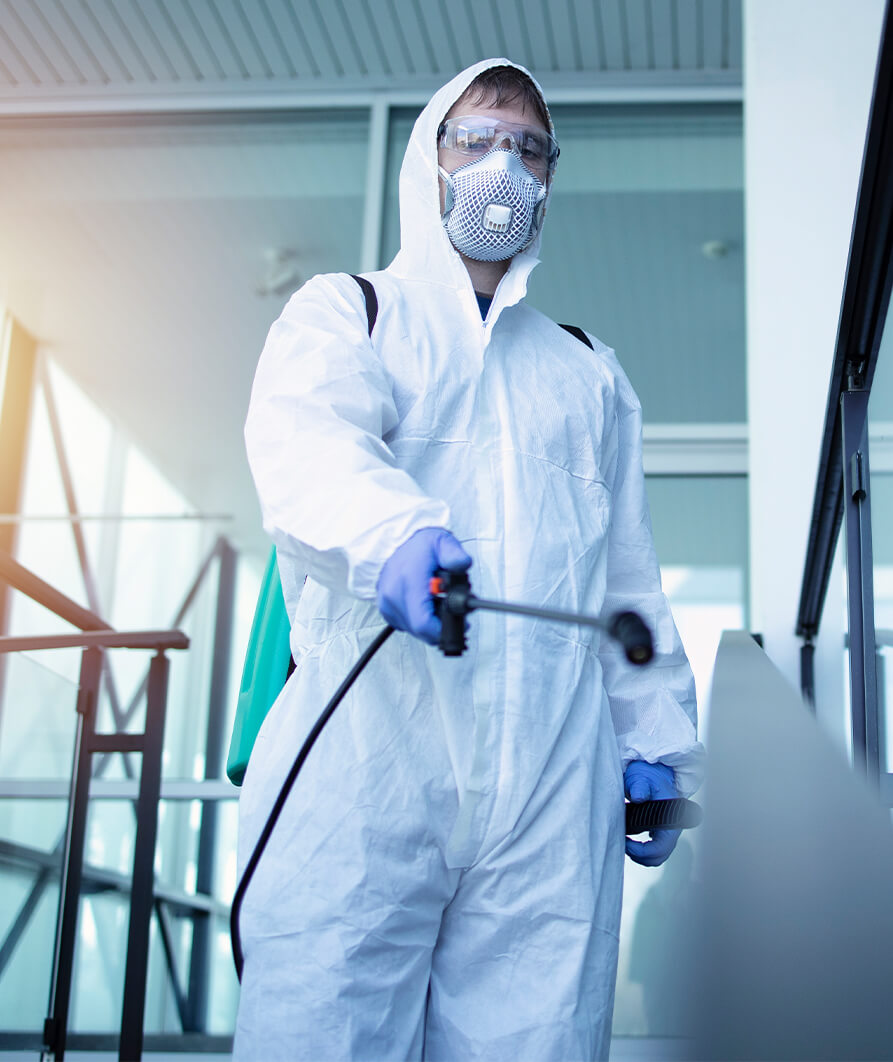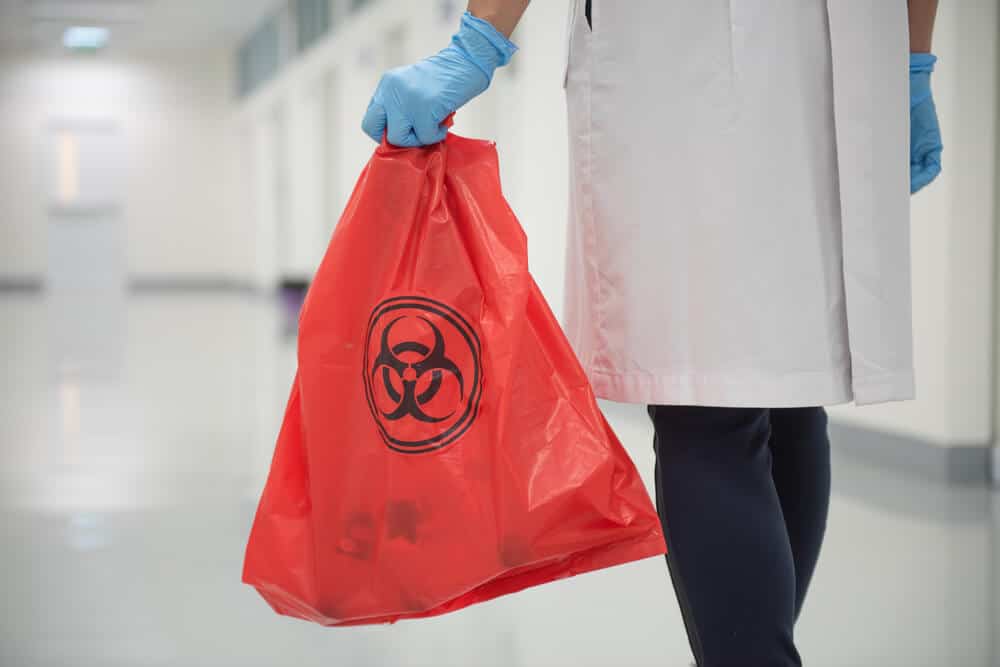Expert Biohazard Cleaning for Crime Scenes, Trauma Incidents, and Polluted Areas
In the world of professional biohazard cleanup, precise focus to information and adherence to safety protocols are paramount. When encountered with the results of a crime scene, injury event, or any kind of contaminated space, the importance of appropriate cleanup can not be underrated. The intricacies and threats connected with biohazards require specialized knowledge and knowledge to guarantee effective remediation. As we look into the complexities of biohazard cleanup for these sensitive environments, a deeper understanding of the obstacles and essential treatments entailed will certainly arise, clarifying the vital function of specialist cleanup services in recovering safety and security and satisfaction.

Importance of Biohazard Cleaning
Biohazard cleanup complying with crime scenes and injury incidents is critical for making sure the safety of individuals and the setting. When these events happen, they often leave behind a selection of biohazards such as blood, physical fluids, and other potentially transmittable products. These substances can harbor hazardous virus like infections and microorganisms, posing major health and wellness threats otherwise properly cleaned and sterilized.
Expert biohazard cleaning solutions are trained to deal with these harmful products safely and successfully. They have the essential devices, such as individual safety gear and specialized cleaning agents, to thoroughly decontaminate the affected areas. By leaving the cleaning to trained professionals, individuals can avoid exposure to hazardous pathogens and avoid the spread of contagious diseases.
Moreover, proper biohazard cleanup is vital for securing the atmosphere. Inappropriate disposal of biohazardous materials can contaminate soil, water sources, and air, posing a threat to wildlife and the ecosystem. By following rigorous clean-up procedures, experts can guarantee that biohazards are safely removed and thrown away based on guidelines, reducing the risk of ecological contamination.
Kinds Of Biohazards Encountered
Various unsafe materials commonly run into in criminal offense scenes and trauma events present substantial health and wellness dangers if not taken care of effectively. Blood and physical fluids are amongst one of the most common biohazards located in these scenarios. These liquids can carry pathogens such as HIV, hepatitis B and C, and various other unsafe microorganisms. Additionally, cells, organs, and body parts can likewise posture severe health and wellness risks as a result of potential contamination.
Another sort of biohazard often come across is sharp items like needles, broken glass, and other things that can create injuries and transmit infections. Chemical hazards are also a concern, as criminal activity scenes might contain materials like tear gas, pepper spray, or medication manufacturing products that need specialized handling and disposal procedures to avoid more damage.
Additionally, mold and mildew and bacteria development can happen precede where decay or extended direct exposure to dampness has actually occurred. These bacteria can launch contaminants and irritants into the air, posing respiratory risks to those exposed. In general, biohazard clean-up experts need to be qualified and fully equipped to efficiently manage these numerous kinds of harmful products to ensure the safety of themselves and others.
Devices and Safety Gear
When attending to the critical task of taking care of biohazards encountered in criminal activity scenes and injury incidents, the use of appropriate equipment and safety gear is vital to ensuring the security of people involved in the cleaning process. Specialized cleansing tools like biohazard sharps, bags, and internet anti-bacterials containers are needed for the secure collection and disposal of infected products. Ensuring that all equipment is correctly preserved, routinely examined, and used according to safety and security standards is vital in minimizing the risk of direct exposure to biohazards during cleaning operations.
Cleaning Refine and Techniques
Efficient and comprehensive clean-up of biohazardous products from crime scenes and injury events calls for careful interest to detail and adherence to strict safety methods. The clean-up procedure normally includes a number of essential steps. Originally, the location needs to be evaluated to identify the extent of contamination and the ideal cleansing techniques needed. Next off, all biohazardous materials, including blood, physical liquids, and tissue deposits, need to be meticulously gotten rid of and taken care of according to neighborhood guidelines.
Complying with the removal of biohazardous materials, the damaged area undertakes a detailed cleaning and sanitation procedure. This action involves making use of specialized cleaning representatives and equipment to make certain that all traces of contamination are eliminated. After cleansing, the area is subjected to strenuous testing to validate that it is secure and totally free of any continuing to be biohazards.

Purification and Disposal Procedures
To guarantee extensive decontamination and appropriate disposal of biohazardous materials, complying with the precise cleanup process, specific treatments need to be carefully followed with strict adherence to safety methods. Decontamination involves the removal or neutralization of impurities to lessen the danger of exposure and spread of hazardous materials. This process generally includes cleansing, sanitizing, and sterilizing the afflicted area making use of specific tools and EPA-approved chemicals.
Once purification is completed, correct disposal of biohazardous materials is crucial to stop further contamination or injury. Biohazardous waste, such as blood-soaked products or bodily liquids, should be carefully accumulated, packaged, and labeled according to regulatory standards. ATP testing. These products are after that transferred to qualified centers for disposal via ideal channels, guaranteeing compliance with neighborhood, state, and government guidelines

Conclusion
To conclude, professional biohazard More hints cleaning is critical for ensuring the safe and reliable elimination of unsafe products from crime scenes, trauma incidents, and infected spaces. By utilizing specific devices, protective equipment, and following proper clean-up processes and methods, biohazard cleaning groups can efficiently decontaminate and get rid of of biohazards, reducing the danger of direct exposure and damage to people and the atmosphere.
As we dig into the intricacies of biohazard clean-up for these sensitive environments, a deeper understanding of the obstacles and essential procedures entailed will certainly emerge, losing light on the vital duty of expert cleanup solutions in restoring safety and peace of mind.
Professional biohazard cleaning services are educated to manage these hazardous products safely and properly. By adhering to stringent cleaning protocols, experts can ensure that biohazards are securely eliminated and disposed of in accordance with guidelines, reducing the risk of ecological contamination.
In general, biohazard clean-up biohazard/crime scene cleanup business specialists should be experienced and fully equipped to successfully take care of these various types of harmful products to ensure the safety of themselves and others.
When attending to the essential task of dealing with biohazards come across in criminal offense scenes and injury cases, the utilization of proper devices and safety equipment is paramount to ensuring the safety of individuals involved in the clean-up process.